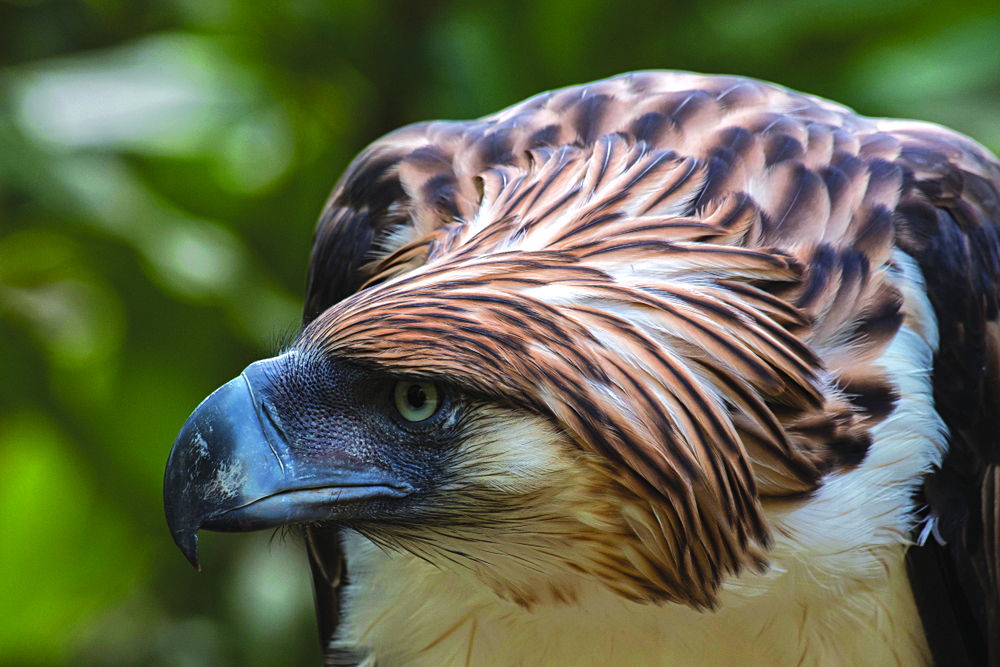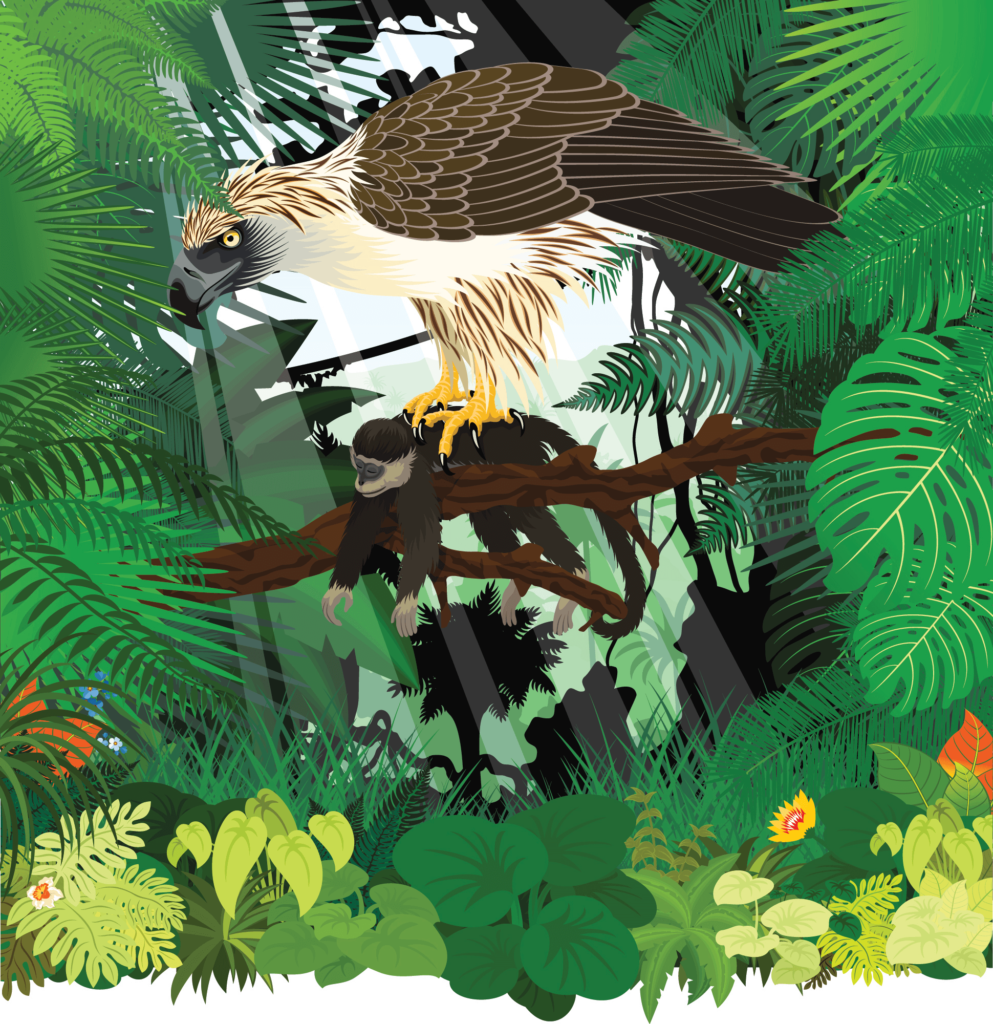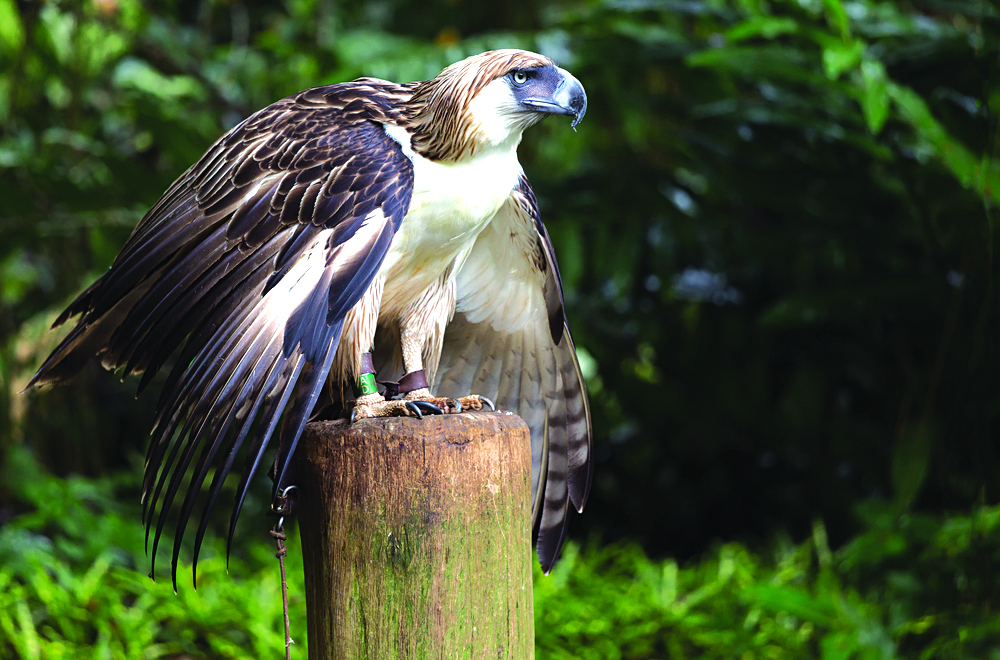The Philippine Eagle (Pithecophaga jafferyi) wasn’t always the national Bird of the Philippines. In fact, though former President Fidel V. Ramos proclaimed them the national Bird in 1995, debate still stands about whether the Philippine eagle or the Maya (Lonchura atricapilla) is more worthy of the distinction.
Read on to find out how the Philippines chose its national Bird, what benefits the proclamation offers them, and what supporters of the Maya have to say about the decades-old decision.

THE 1995 PROCLAMATION
Ramos’ Proclamation No. 615 “Declaring the Philippine Eagle as the National Bird of the Philippines” paved the way for better conservation, protection, and recognition of the species. The proclamation states that the country has the right “to a balanced and healthful environment in accordance with the rhythm and harmony of nature,” of which the Philippine Eagle is part.
According to the proclamation, the Philippine Eagle embodies Filipinos’ uniqueness, strength, power, and love for freedom, and had already become a source of national pride. Aside from the Bird’s symbolic nature, their being “a natural treasure found only in the Philippines” played a role in the species being singled out.
The proclamation also states that the Philippine Eagle is “the best biological indicator” of the quality of Philippine wildlife and forest ecosystems, being of both scientific and ecological value to the country.
Considering how much the Philippine Eagle is cared for and valued today, it’s hard to believe that the Philippine Eagle was once known only as the Monkey-Eating Eagle.

THE FILIPINO AS EAGLE OR MAYA?
While the Philippine Eagle battles extinction, the Maya is known for their high survival rate and adaptability in human habitations.
Since 1995, many have called on the government to reconsider the Philippine National Bird and recognize the Maya as the rightful symbol of the Philippines.
A 2018 article by Mike Banos for the online Davao- based magazine Resurgent, for instance, argued that the white, predatory Philippine Eagle flies high, while the tiny, black and red Maya stays close to the ground, reflecting social classes and issues. They write, “[T]he Pinoy is a Maya.”

One reason advocates of the Philippine Eagle are so passionate about their conservation is the Philippine Eagle is known as an umbrella species. Their conservation can aid in the protection of other plants and animals in their ecosystem.
THE MONKEY-EATING EAGLE
For a long time, people believed that the Philippine Eagle ate Monkeys. This may have been because, according to a 2015 article written by Rose Carmelle Lacuata for ABS-CBN, scientists had found undigested Monkey pieces in the first Philippine Eagle specimen.
In 1978, former President Ferdinand Marcos signed Proclamation No. 1732, “Declaring the so-called ‘Monkey Eating Eagle’ as the Philippine Eagle,” after it was found that the Eagle fed on other animals such as Bats, Snakes, Lizards, Civets, and other Birds. The proclamation described the Philippine Eagle as “one of the most marvelous and cherished dwellers of our forests through the ages,” symbolizing strength as well as beauty.
The change of name was meant to encourage Filipinos to take more pride in the species, as the proclamation stated that the Bird is one “that can be found only in the Philippines.”
By 1983, the country had begun viewing the Philippine Eagle in a different light, with various government agencies recognizing the Bird. For instance, Bangko Sentral ng Pilipinas issued a 50-centavo coin with the Philippine Eagle on its back that year. The Bird was also the official mascot for the 2005 Southeast Asian Games.

PRESERVING THE PHILIPPINE EAGLE
The National Commission for Culture and the Arts describes the Philippine Eagle as being on the verge of extinction.
According to the Peregrine Fund, a non-profit organization conserving threatened and endangered Birds of prey, there are fewer than 500 Philippine Eagles alive. They cite human activity as the main cause of the Philippine Eagle’s endangered status, with shooting, logging, and deforestation for agricultural purposes further pushing the species towards extinction.
One reason advocates of the Philippine Eagle are so passionate about their conservation is the Philippine Eagle is known as an umbrella species. Their conservation can aid in the protection of other plants and animals in their ecosystem.

Thus, Ramos’ proclamation directed the Department of Environment and Natural Resources to establish sanctuaries for the Philippine Eagle, encourage local communities to manage the Philippine Eagle’s habitat, accelerate and expand research on the Philippine Eagle, and promote public awareness and education on the species.
Today, the Philippine Eagle is artificially bred at the Philippine Eagle Center in Davao City. They are also protected by Republic Act No. 9147, also known as “An Act Providing for the Conservation and Protection of Wildlife Resources and their Habitats, Appropriating Funds Thereof, and for Other Purposes.” Because of their relevance to the country’s cultural heritage and environment, illegal acts against them are punishable by up to 12 years in prison.






